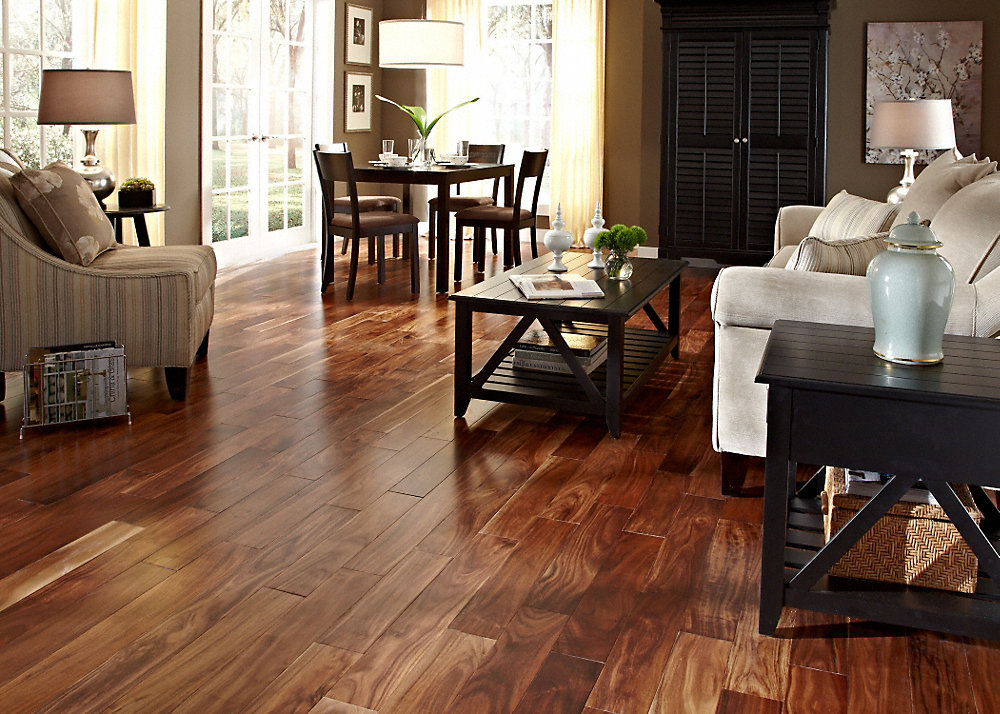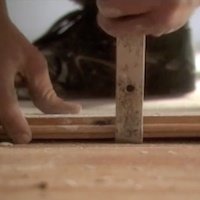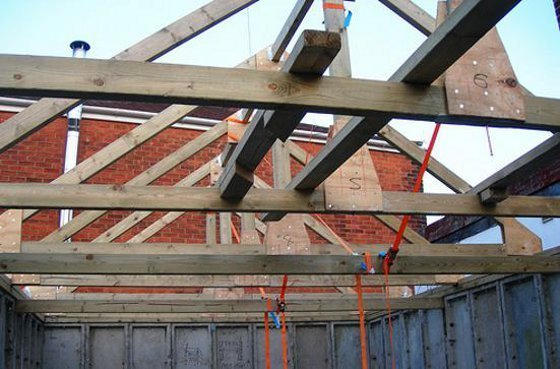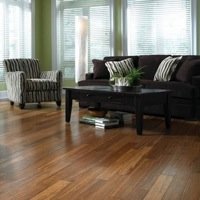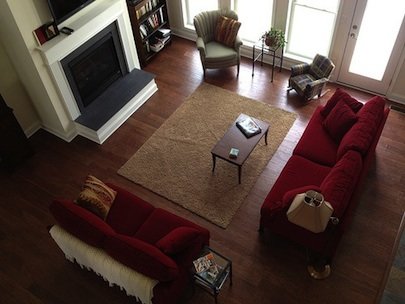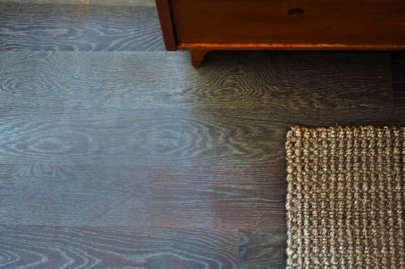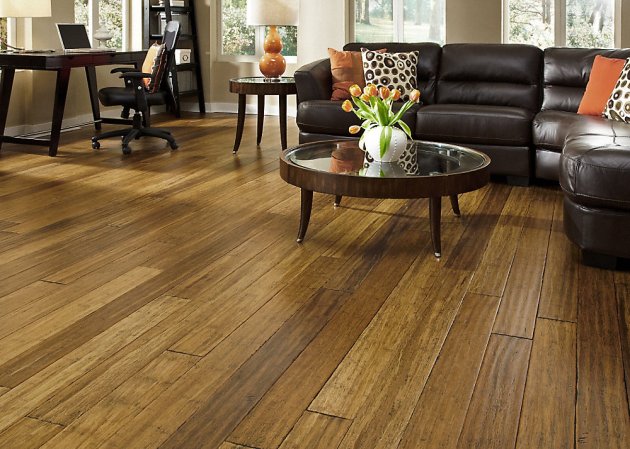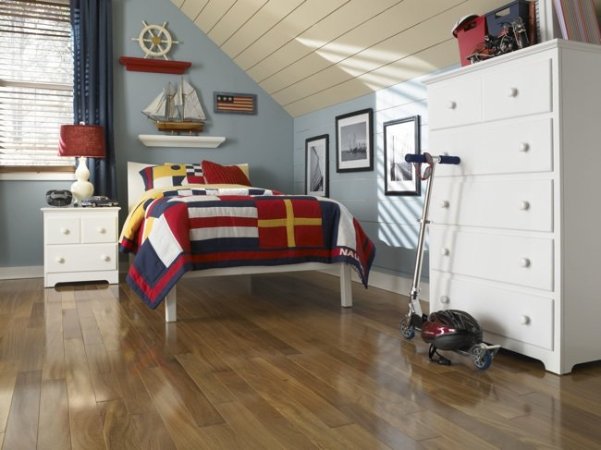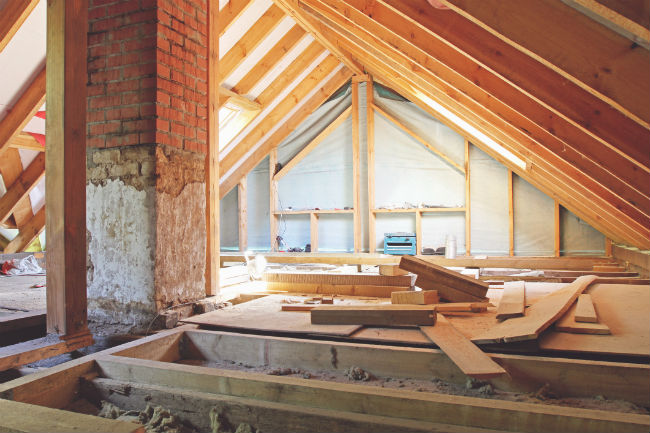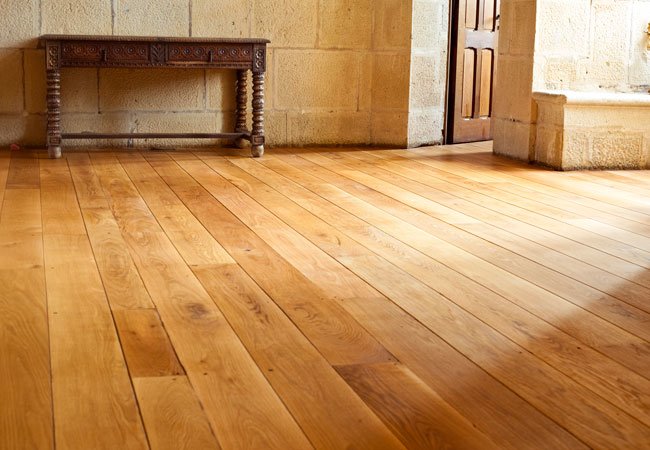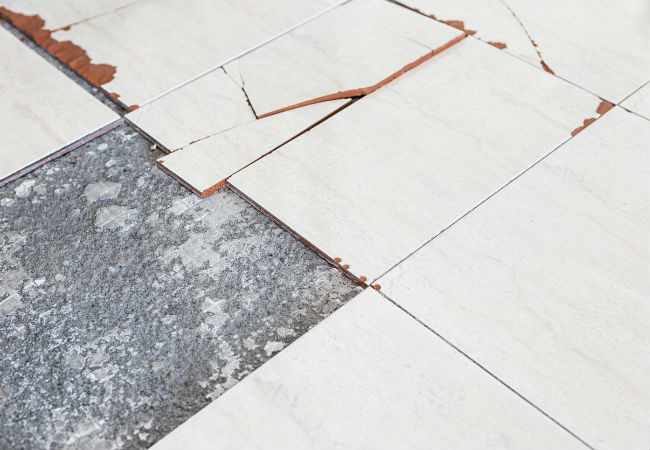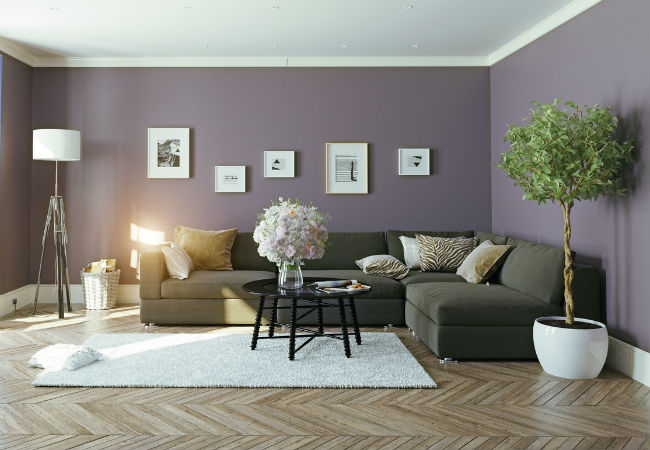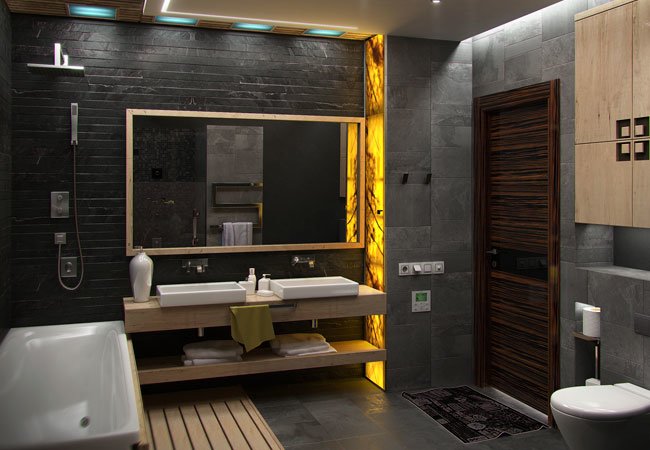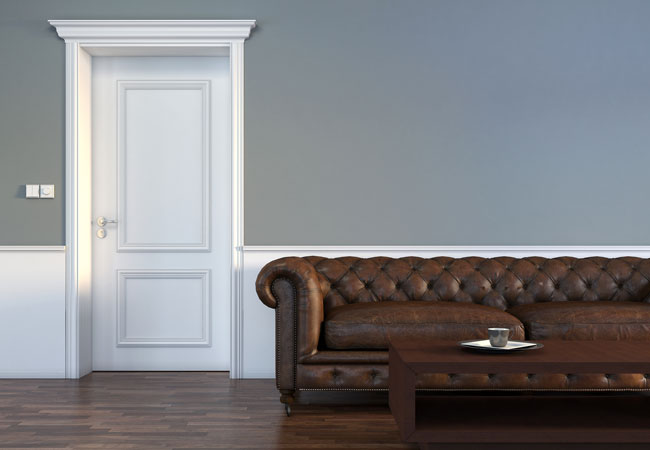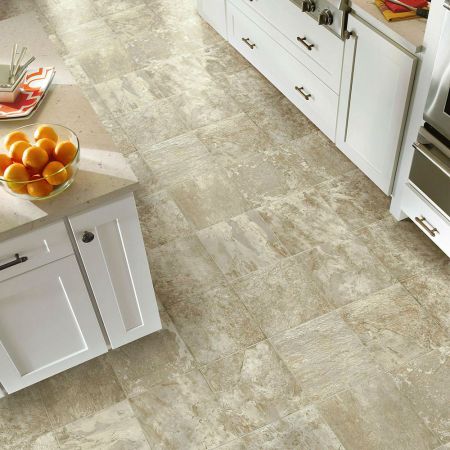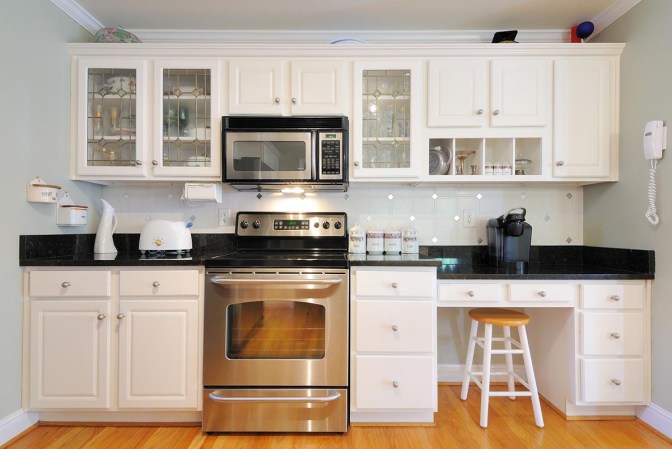We may earn revenue from the products available on this page and participate in affiliate programs. Learn More ›
Engineered flooring might sound like something that’s made in a lab from plastics and other chemicals but, in fact, it consists of real wood. What sets engineered flooring apart from other types of hardwood flooring is that the boards are composed of a multi-layer “core” substrate with a wood veneer top rather than a solid piece of wood.
The core contains anywhere from three to seven layers of plywood or medium-density fiberboard (MDF) which are put together in a cross-grain pattern using heat and high pressure. The top layer is a veneer of real hardwood and therefore can achieve the look of virtually any type of solid flooring available.
BENEFITS
The “sandwich-like” construction of engineered flooring is what gives it a distinct advantage over hardwood floors. Because each layer can shrink and swell on its own, engineered flooring is much less likely to buckle or warp under moist or extreme temperature conditions. The end result is a wood flooring product that mimics the beauty and appeal of solid hardwood, but costs less, installs easier and offers the benefits of moisture resistance.
“Engineered flooring is a popular choice for today’s homeowner for many reasons,” says Chelsea Fossum from Lumber Liquidators, a national flooring retailer that sells nearly 80 different styles of engineered hardwood products. “Since it is less susceptible to moisture issues, it can be installed below grade—including basements, and areas in the house subject to variations in humidity, like the bath. It can also be installed on top of a wood subfloor or concrete slab making it an easy install for the do-it-yourselfer,” she adds.
INSTALLATION
Installing engineered flooring is similar to other wood floor installations. The product can be nailed, stapled or glued down. “Easy Click” products are also available, allowing floorboards to be snapped together and “floated” above the base floor. Engineered wood is an extremely stable install because there’s very minimal potential for gapping and cupping, which is where the wood actually buckles on the edges. The flexible construction also makes it ideal for installing on top of radiant heat systems as it’s not subject to the shrinkage that pure hardwood can undergo from being dried out by this type of heat.
DOWNLOAD BOB VILA’S FLOORING GUIDE HERE
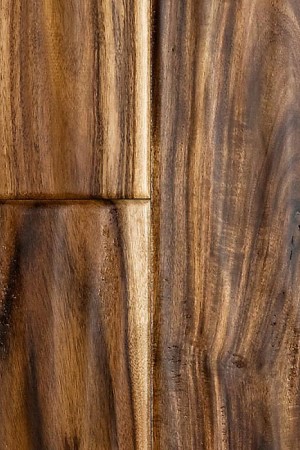
DESIGN
Engineered flooring comes in a wide range of wood species, from domestic maple and hickory to exotic Brazilian cherry and bamboo. Regardless of whether you live in a country cottage, suburban ranch, or contemporary condo, there is an engineered floor to suit your decorating style.
In addition to the variety of woods, you can also choose engineered flooring planks in a variety of widths, ranging from 2 ¼ to 7 inches, as well as a variety of lengths from 12 to 60 inches. Many boxes have planks of differing sizes to keep the installation visually interesting. One of the more popular engineered wood floor finishes today is hand-scraped, which gives the product a worn, distressed feel reminiscent of authentic hand-planed wood floors.
MAINTENANCE
Maintaining engineered floors is pretty much the same as maintaining hardwood floors. You’ll want to be sure that the surfaces remain free from dirt, grit and any other grime that might scratch. Do this simply by sweeping with a soft-bristled brush or vacuuming on a regular basis. When the floors start to get a buildup of dirt, clean them with a damp mop and a mild solution of vinegar and water. Never use a soaking-wet mop because even though engineered floors are moisture-resistant, it’s never a good idea to drench them completely. Since floorboards are generally pre-finished, waxes or harsh chemical cleaners are generally not recommended.
Just like hardwood floors, if someday your engineered floors lose their luster, you can sand them down and refinish them. This is especially true of engineered flooring boards that are ¾-inch-thick as opposed to the thinner ⅜-inch variety. In the thicker boards, the veneer is also beefier, so you should be able to refinish them two-to-three times over their lifespan, which is generally considered to be 40 to 80 years—a long life indeed for a product that can be had for as little as $1.69 per square foot.
This post has been brought to you by Lumber Liquidators. Its facts and opinions are those of BobVila.com.
